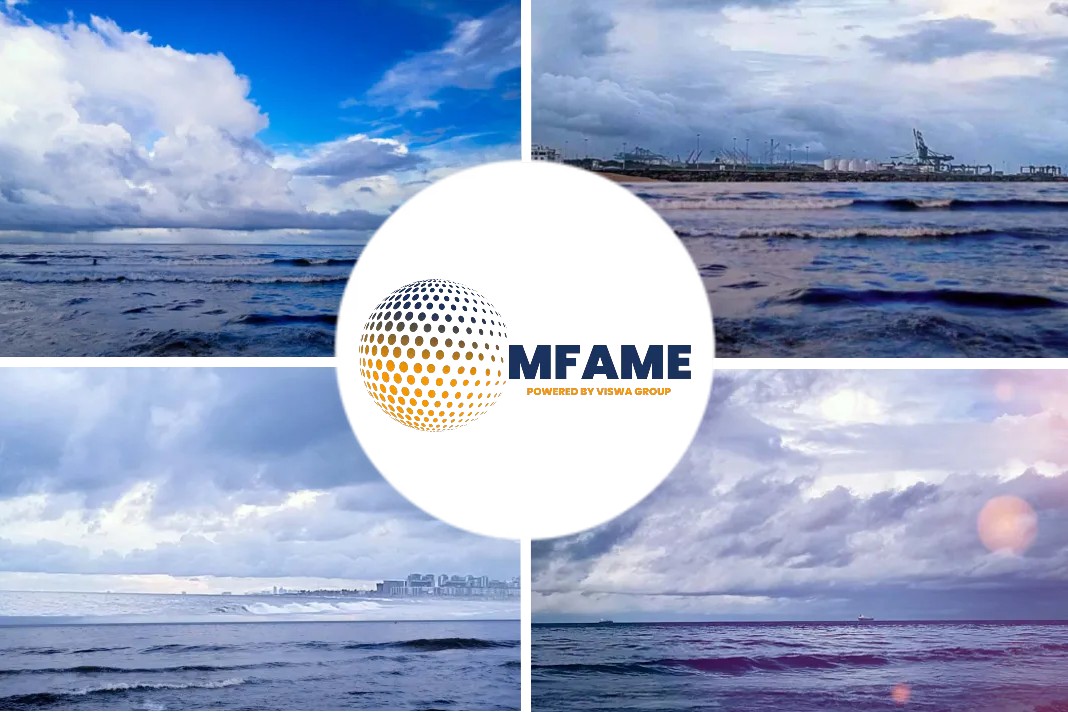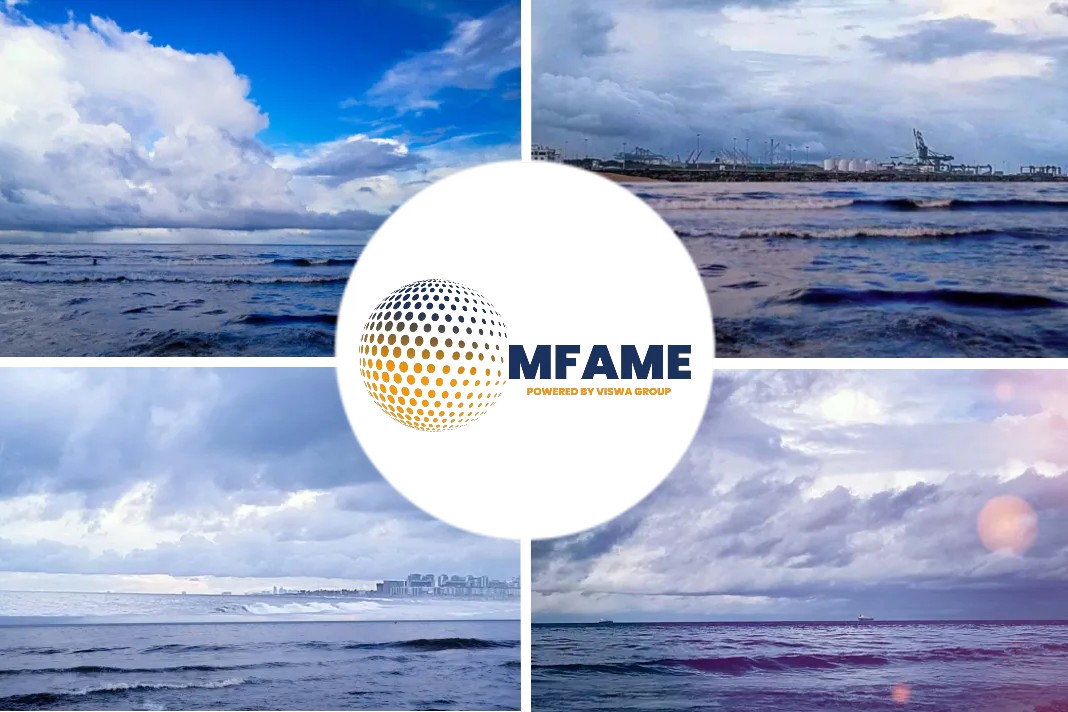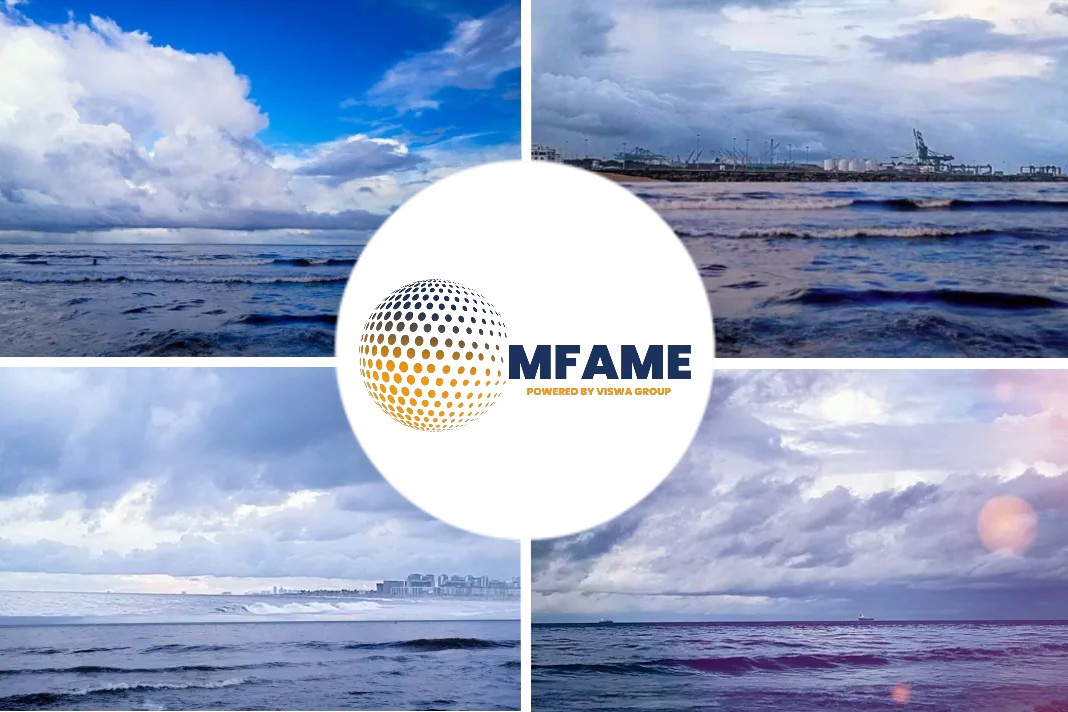Container fires may now be occurring on a weekly basis and in Gard’s experience most are associated with cargo misdeclaration. However just as with tackling the fire itself, tackling misdeclaration is a significant industry challenge, says an article published in Safety4Sea.
Thus, Mark Russell, Vice President, Head of Cargo Claims in London and Charmaine Chu, Claims Executive in Hong Kong discuss the severity of cargo misdeclaration and the impact it has on the shipping market.
Cargo Fires
Stories describing danger at sea change with the times. An increasingly common narrative today is the danger posed by fire that originates with cargo. Cargo fires represent potentially catastrophic risks. The crew is in great danger when a fire breaks out on their ship and every unsuccessful attempt to quickly extinguish the fire increases the risk of serious harm to people, the environment and property. Tackling fires is an even greater challenge on larger container ships, which carry large quantities of cargo, some of it hazardous. In this Gard Insight we will look at the increasing likelihood and severity of container fires originating from the cargo itself.
Hazardous cargo
To understand the risk of container fires we need to consider two things – the likelihood of harm and the severity of that harm. Since, as we will see, most container fires involve hazardous cargoes, it is worth considering the quantity of dangerous goods transported by container.
Thousands of products are listed in the IMDG Code, which governs the carriage of dangerous goods in packaged form, many of which are containerised.
According to an International Cargo Handling Coordination Association (ICHCA) submission to the IMO in July 2017 the United Nations Conference on Trade and Development (UNCTAD) calculated there were approximately 180 million TEU movements in 2016.
- In their submission ICHCA assumed 60% equates to actual Container Transport Units, 50% of which are laden, and of which 10% contain declared dangerous goods.
- So ICHCA approximates that around 5.4 million containers annually are packed with dangerous goods.
- What is more difficult to estimate is the amount of dangerous cargo which is not declared or is misdeclared.
Container fires are increasingly likely
Serious container fires are not new and Gard’s Guidance on Freight Containers lists numerous historical cases going back to 1996. However, one data subscription source suggests that the number has been increasing more rapidly in the last decade, which in part reflects the increasing number of containers transported.
However, even this data appears to exclude a number of significant cases that are known to insurers. For example, Gard is aware of around 10 significant container fires in 2015, four more than the number in the graph. There are also many cases not in the public eye and Gard has learned that one organization, collecting data on behalf of certain container lines, recorded over 20 container fires in 2017. Fortunately, it appears most of these fires were quickly contained by the crew. Extrapolating that figure for all container lines suggests that fires may be occurring on a weekly basis.
Increased severity of container fires
The highest severity of harm from any fire is loss of life and we know from the flag state investigation into one very public container cargo fire in 2012 that several crew members died and others were injured when an explosion occurred in the early stages of fire-fighting. Crew fatality and injury have occurred already this year in another very public case. In a review of recent significant container fire cases where Gard had an involvement, one crewmember suffered fatal injuries due to a secondary explosion involving calcium hypochlorite.
Environmental Impact of Container Fires
Container fires also have an environmental impact, not least from all the waste generated from burnt and wet material. The extreme heat generated during many hold fires often means that salvors resort to flooding the cargo spaces with water to contain and extinguish the fire.
- The 2012 case mentioned above involved disposal of some 8,000 m/t of scrap, 350 m/t of hazardous waste and 30,000 cubic metres of contaminated fire-fighting water.
- Disposing of waste is also becoming increasingly costly. In a recent Gard case the disposal in Europe of some 130 containers and 5,000 cubic metres of fire-fighting water cost nearly USD 10 million.
Added to the cost of the damage to the vessel, loss of earnings, cargo damage, salvage and General Average expenditure, it is not difficult to see why the 2012 case mentioned above is the subject of ongoing litigation involving hundreds of millions of dollars and countless law firms.
That vessel was carrying less than 5,000 TEU. We now have over 21,000 TEU capacity ships and a similar case today would escalate costs and losses towards USD 1 billion.
Gard insured the charterers in the majority of recent cases, and vessel sharing and slot charter arrangements are an important feature of the liner trade in the context of fires, as will be explained further below. It is worth mentioning that, if cargo in a charterer’s box is proven to have caused the fire they face the prospect of unlimited liability for the owners’ claim for vessel damage and related losses. Whenever an incident occurs all the lines are keen to establish whether their box was the ignition source and they will all know that the high cost of these incidents often cannot be passed onto a shipper having no assets or assets which cannot be reached.
The predominant cause – cargo misdeclaration
Gard has been involved in 13 container cargo fire cases of some significance in the four years 2014-2017, most of which as insurers for charterers. A “dirty dozen” of those are associated with cargo being misdeclared. Six cases involved calcium hypochlorite variously misdeclared as “organic surface”; “calcium chloride”; “disinfectant”and “whitening agent”.
Although a very common chemical product used for water purification, calcium hypochlorite can be very hazardous because it naturally decomposes and emits heat during decomposition. If that process is accelerated by poor packaging or stuffing that does not allow heat to escape, or from external heat sources, the rate of decomposition increases and if this becomes violent an explosion can occur.
How To Recognize Calcium Hypochlorite?
Recognizing the hazards of calcium hypochlorite the International Group of P&I Clubs and the shipping line members of CINS (Cargo Incident Notification System) jointly issue guidelines that can essentially be considered “IMDG Code plus precautions”. This contrasts with the attitude of some shippers. An internet search reveals one saying that “No shipping company accepts calcium hypochlorite in dry container, because they believe this is dangerous chemicals for dry container. For the above reason, to ship it in dry container, we must cover the name on the B/L, we show another name like: calcium hydroxide, calcium Chloride, etc. on the B/L. in this way, we can ship it in dry container”. Even if this is not a genuine statement from an actual shipper it is perhaps symptomatic.
Multiple Misdeclarations
In one Gard calcium hypochlorite case, unaffected containers booked for a different shipper and container line to those for the container that caused the fire, were identified as suspect from the manifest. Upon inspection they too were found to contain misdeclared calcium hypochlorite. This shows that multiple misdeclarations may exist on larger container vessels, increasing the likelihood of just one causing a fire. Other misdeclarations leading to fires in Gard cases involved charcoal (one was declared as “tablets for water pipes”), lithium ion batteries (declared as “mobile phone accessories”), and paints and aerosols. In most Gard’s cases the containers were loaded in Asia, fires were predominantly hold fires and all vessels were fortunately relatively close to assistance that became necessary from salvors/shore services.
The challenges ahead
With more than a quarter of incidents reported to CINS by its liner members involving misdeclaration, the scale of the challenge faced by the shipping industry is as colossal as todays mega container ships. Moreover, there is industry recognition that SOLAS amendments for fire-fighting arrangements have not kept pace with increases in ship size.
The risk of fire due to misdeclaration of dangerous cargo is therefore compounded by the difficulty of fighting fires on larger vessels. Additional Class Notations for fire-fighting have only addressed deck fires and many organisations, including IUMI, have called into question the adequacy of fixed CO2 and water-based firefighting systems in containership holds. Such concerns are not surprising given the presence of air pockets, extreme heat and significant dangers to crew who may not know what is actually in boxes in the vicinity of the fire.
Banning the carriage of hazardous products, such as calcium hypochlorite, is probably not a long term solution. There is simply too high a demand for the product – the IG/CINS guidelines refer to an estimated global production of 400,000 tonnes a year. Outright bans may inadvertently “encourage” misdeclaration because of fewer carriers and higher costs.
How Misdeclarations affects?
The sheer volume of bookings now being handled by fewer larger carriers, who naturally want to make the booking process quicker and easier for customers, means that IT tools are vital to help combat misdeclaration. Some carriers have developed sophisticated software that scan bookings and one carrier recently reported a staggering 1,250 potential hits a day.
The reality, however, is that all lines need to have similar high standards, as they are sharing space and rogue shippers will always find the weakest link. The illustration below shows this. When Line A, using sophisticated software, rejects a booking of calcium hypochlorite, misdeclared as “water tablets” and Line B, using spot checks, accepts the booking, through space sharing agreements the container ends upon Line A’s ship despite the initial rejection.
Tackling misdeclaration at an industry level
Shipping companies who invest in sophisticated software to tackle misdeclaration, as well as enhanced fire-fighting equipment and well drilled crews will tilt the law of averages on their side in the event of a fire. However, as the old proverb says “fire is never a gentle master” and until and unless shippers are deterred from misdeclaration we will continue to see serious harm to people, the environment and property.
- Lack of Information Sharing : One reason shippers are able to ship misdeclared cargo today is a lack of policing by the authorities. The Tianjin explosion in 2015 was blamed on illegally stored hazardous materials. More than 165 people were killed and 49 reportedly jailed – the government had good reason to be tough. But being reactive is one thing and prosecuting one rogue shipper of one misdeclared container will inevitably raise cost concerns. Shipping lines fear sharing information on rogue shippers as it may expose them to anti-competition legislation. The same may make it difficult for lines to collaborate on addressing the cost differential for shipping hazardous cargo compared to benign cargo.
- Lack of Inspections: In terms of proactive measures, how many states are undertaking inspection programmes on dangerous goods as required by SOLAS? A 2017 IMO submission by the ICHCA calculated, based on reports that member states had submitted to the IMO, that inspections represented less than four out of every 100,000 containers moved and we only talk here about inspections on declared dangerous goods. Ships are often the subject of numerous concentrated inspection campaigns – can the same be said of shippers who manufacture and/or export hazardous cargo? What role should terminals play to try and prevent that cargo from being shipped if misdeclared? When serious fires do occur, do we always see a flag state investigation report? There are more questions than answers.
Container Fire Risk To Worsen
There are 451 ultra-large containerships over 10,000 TEU operating today, with another 129 on order for delivery into 2020. A global consultancy firm recently predicted a 50,000 TEU ship by 2067 and global thirst for everyday products is relentless. OECD figures have estimated one billion TEU in transit by 2030, with Asia leading the increase in volume. Today over 400 million lithium ion batteries and over 15 billion aerosols are said to be produced annually. All these staggering numbers suggest that the future container fire risk may be worse than it is today.
Cargo Misdeclaration To Be First Line of Defence
Tackling cargo misdeclaration may well be a first line of defence. However, the industry needs to unite to plug the gaps that exist in that line today. All stakeholders have a role to play.
On the one hand ships and crews deserve tougher policing of shippers by states.
On the other, the desire to avoid carrying unsafe cargo should always be greater than the desire to carry, which makes the checks and balances at the booking stage important.
Perhaps Blockchain technology will have a future role to play in product verification, but until then we are bound to see many more misdeclarations – and probably therefore container fires.
Did you subscribe to our daily newsletter?
It’s Free! Click here to Subscribe!
Source: Safety4Sea






















